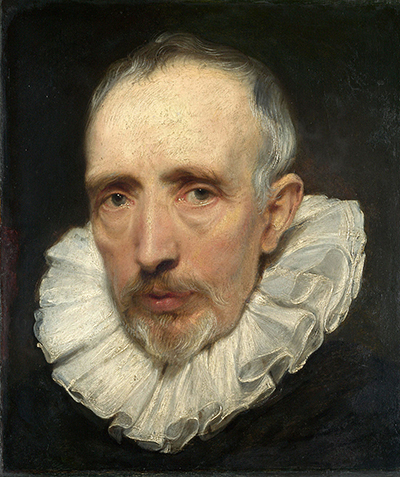Cornelis van der Geest was local to Anthony van Dyck in Antwerp and he himself was a successful spice merchant
Cornelis was passionate about art and more than willing to commission various pieces in order to support the local art scene whilst building his own personal art collection.
Van de Geest would also later become the dean of the haberdashers guild, who would sell small handcrafted items. Despite his wealth as a successful businessmen, it is his art collection that is now most memorable. It stands as a who's who of flemish art of that period.
His collection included Battle of the Amazons plus an untitled portrait by Peter Paul Rubens, Woman at her Toilet by Jan van Eyck, plus several works by other notable artists such as Quentin Matsys, Pieter Aertsen, Jan Wildens and Willem van Haecht. There was also some Italian art too, from Domenichino and Correggio.
This portrait by Van Dyck is very honest and precise, aggressively detailing the subject's facial features and putting very little else into this composition. The frilled collar suggests at his donors standing, but the main focus remains this very personal portrait. As a major supporter and follower of the arts, the donor would have been well aware of Anthony's reputation as one of the most skilled portrait artists in all of Europe and would have been keen to employ his skills.
The original artwork is one of the National Gallery's smallest portraits, standing at only 37.5cm long by 32.5cm wide. The work is dated at around 1620, when the subject would have been about 65 years old and his loyal artist at just 21. This painting would have come shortly after Van Dyck's period of tutorship from Peter Paul Rubens, whose work was also collected by Van de Geest.




